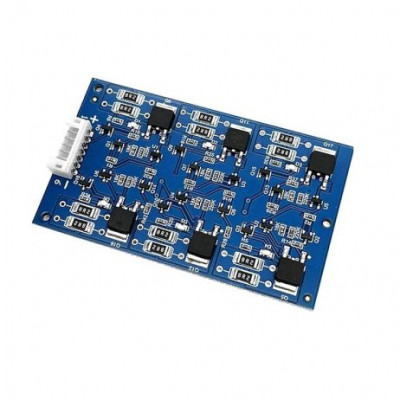This is Farra Capacitor Protection Board Balance Board 2.7/16V Lithium Titanate Battery Protection Board with Indicator Light. The Farra Capacitor Protection Board Balance Board is designed specifically for lithium titanate batteries to protect them from overcharging, over-discharging, and balancing the cell voltages. The 2.7/16V rating indicates its operating voltage range, typically used for lithium titanate batteries, which have a lower nominal voltage compared to other lithium-ion chemistries.
The indicator lights on the board usually show the status of the battery, such as charging, fully charged, or any faults in the system. This helps users monitor the batterys condition and ensure it operates within safe parameters.
These protection boards are essential for ensuring the longevity and safety of lithium batteries, especially given their sensitivity to voltage fluctuations. Always follow the manufacturers guidelines and specifications when using these protection boards to ensure proper functionality and safety.
Farad capacitor protection board
Before wiring, please empty all the stored charge in the capacitor, and short-circuit the positive and negative electrodes of each capacitor with a wire for more than three minutes (the larger the capacity, the longer the short-circuit time can be discharged).
Before assembling, please ensure that the batteries are in good consistency, and the internal resistance/capacity of each battery should not differ too much. The best test is to choose batteries with good consistency to form a battery pack, so that the battery pack can achieve the longest life.
Lithium titanate battery:
Charge and discharge the same port, without the protection board. The charger should use a lithium battery charger (adjustable regulated power supply can also be used). Generally, the highest voltage will be indicated on the charger. It is forbidden to use a lead battery charger to charge lithium batteries.
Before use, please charge the capacitor bank to a voltage similar to the working state. You can use a high-power resistor to limit the current to prevent the power supply from being damaged or overcurrent protection caused by excessive current. If there is an indicator light on when the capacitor bank is working normally, please remove the capacitor bank to check the capacity of the capacitor. For the test method of Farad capacitor capacity, please refer to the advanced section.
Precautions:
2. When the protection board is protected, it will generate a lot of heat. This is the heat generated by the discharge of the battery that exceeds the protection voltage through the transistor and the resistor. If the heat cannot be dissipated in time, it will damage the protection board or the battery. Therefore, the protection board should have enough heat. space to dissipate heat, do not wrap the protective plate with other materials.
4. If possible, check the battery voltage again after running the battery pack with load for several cycles to ensure that the battery voltage is not much different.
Features:
1. This protection board can protect Farad capacitors and lithium titanate batteries and is suitable for Farad capacitors and lithium titanate batteries with a voltage of 2.7V
2. The protection voltage can be fine-tuned within the range of 2.5V-3V by replacing the voltage divider resistor (higher equalizing voltage needs to replace the high-resistance power resistor)
3. The working principle of the circuit is that when the voltage of a single battery/capacitor is higher than the equilibrium voltage, the battery/capacitor is discharged by turning on the transistor inside the circuit, and the excess power is dissipated into heat through the power resistor.
4. The single-piece protection board is suitable for any 1-6S battery/capacitor. When the number of strings is less than 6S, connect it from the negative pole according to the wiring diagram, and leave the extra lines empty.
Specifications:
- Operating Voltage: Designed for lithium titanate batteries with an operating voltage range of 2.7V to 16V.
- Circuit equalization voltage accuracy 1%
- Product dimensions (mm): 76 x 45 x 5
- Weigh (g): 21
Package Includes:
1 x Farra Capacitor Protection Board Balance Board 2.7/16V Lithium Titanate Battery Protection Board with Indicator Light
| Brand/Manufacturer | Generic |
| Country Of Origin | China |
| Packer / Importer Address | Constflick Technologies Limited, Building No 13 and 14, 3rd Floor, 2nd Main, Siddaiah Road, Bangalore, Karnataka - 560027 India. |
| MRP | Rs. 0 (Inclusive of all Taxes) |
* Product Images are shown for illustrative purposes only and may differ from actual product.
Farra Capacitor Protection Board Balance Board 2.7/16V Lithium Titanate Battery Protection Board with Indicator Light
- Product Code: EC-18125
- Availability: Out Of Stock
-
Rs.371.00
- (Excluding 18% GST)



